This week on the Modern Direct Seller Podcast, we talked all about video. We know that, in order increase visibility for our products and services, we need to utilize video now more than ever, so filmmaker and storytelling coach James Cooper loaded this episode with his best advice to organically grow your platform. From getting started in the intimidating world of Reels and TikTok, to sharing personal stories in a way that resonates with your audience, to turning emotional connections into new clients, there’s something for even the most social media savvy listener to learn!
Connect with James through his website, or on Instagram, TikTok, and Facebook, to keep up with all of his coaching and new programs!
Time based notes:
- 1:15 James Cooper introduction
- 4:41 Tips for finding your voice
- 7:47 The video learning curve
- 9:42 Creating an emotional response
- 10:39 Stories to share on social media
- 15:08 When to sell using video
- 17:24 Turning a video into a chat
- 22:06 What’s your favorite office supply?
Get the Inside Scoop on Short-Form Videos with James Cooper
This week on the Modern Direct Seller Podcast, we talked all about video. We know that, in order increase visibility for our products and services, we need to utilize video now more than ever, so James Cooper loaded this episode with his best advice to organically grow your platform, share personal stories in a way that resonates with your audience, and turn emotional connections into new clients.
For those of you that have not yet met James, he is a filmmaker and a storytelling coach. He grew up in Hollywood, California, he’s been in the entertainment industry since he was five years old, and currently, he has a program called Powerful Video, helping business owners and clients with video and strategic storytelling. Why don’t you share a little bit more of your background, James?
Well, I grew up in an entertainment family. My father was a television director. My mom was an actress. So, I would be picked up from school and taken to the set where my dad was working; I got to just sit in his chair and watch him work. And so, even though I never went to film school, I got an on-set education.
And, I was just always fascinated with how TV and films were made. And, whenever I had questions, my dad wouldn’t tell me the answer directly. He would have me go find the answer. So, if I had a question about why the camera was moving on that line, he would say, “Oh, there’s Bob. He’s the camera director. We’re gonna go and ask him.” Or, I’d have a lighting question, and he would say, “Jimmy, he’s the lighting director. Go ask him.” And, he would send me to all these different people to learn how things worked. And, that was just kind of my life growing up.
That sounds better than film school. Like, you’re getting the real firsthand knowledge of exactly how it works. So, tell us how you made the leap to what you’re doing now. You’ve been doing video and working with clients for a long time, and now you shifted your focus more into supporting business owners and sharing their story via video, right?
Yes. So, I think the biggest leap for me was when I got out of college. I went back to my home base in Los Angeles and started working in the television industry, specifically the commercial industry—because I always had an affinity and excitement for TV commercials. And, that was the first time that I linked storytelling with marketing, because in commercials on television, you have to tell a story in 30 seconds or less to get people to want to buy the product or service. And so, I would read hundreds if not thousands of scripts, from Cheerios to Ford, and see how they could tell a story.
And then, when I left the industry after my son was born, I decided to just freelance, and I started working with small businesses to create marketing videos for them to get more people in their doors. And then, that turned into online coaches and consultants, which is primarily the people that I serve now, helping them create the videos they need to attract the clients that they want.
I feel like one thing you do really well is you take the complexity of video, and the fact that we all overthink it, and you really keep it super simple. Everyone knows we need to be on video, right? It’s a given right now. If you want visibility, if you want to grow your following organically, you need to be using video, yet it’s still scary for people. So, any tips on finding your voice and sharing your story?
Well, finding your voice, that’s a very deep conversation. And, I think the main reasons that people get intimidated is there’s three hurdles that are very real, but can also become self-imposed: time, money, and not knowing where to start. So, let’s just debunk those three things right now.
The first thing is time. The fastest growing area where video is being created is on the platforms Instagram, TikTok, and YouTube Shorts. Vertical video short-form content. So, when you’re talking about video, you’re not talking about creating this long, huge masterpiece of a video; you’re talking about creating a 15- to 30-second soundbite. And so, when it comes to time, and when you’re thinking, “How can I take my idea to internet in the fastest time possible?” The answer is Reels and TikToks. You can create a Reel in just a couple of minutes and start attracting your ideal audience. So, that takes kind of the time factor out of the equation.
The second thing is money. You don’t need to spend money on gear and fancy equipment. I tell all my clients, “Use the equipment that you already have.” If you have a DSLR, and you want to do some fancier stuff, great. But I can tell you, the videos that produce the most are usually from cellphones, using those TikTok and Reel platforms.
And then, not knowing where to start. This is a common one, because when we haven’t done something before, of course it’s going to be foreign to us. Of course, it’s going to seem not natural. But, you know, so is tying your shoes for the first time. I like to think of confidence as tying your shoes. We don’t have to think about it; we just do it. As you become more confident, you become more competent at it. And then, more competence breeds more confidence. So, it’s just a matter of just getting started. And, the three best questions I know to get started are: What do you love? What are you good at? What did you learn? And, if you start with those three questions, you start opening yourself up to a whole world of topics that you can share, that are relevant to the things that people need to hear about.
I love that so much. I think, so often, we overthink what to share, or how to share it, or the logistics, or the gear that we need, so we never get started.
And that learning curve is actually so much shorter than people think. So, once you get over that learning curve, once you learn the technical logistics of how to use the app, then you can just go right into creating your content.
Right? It’s really around gaining that confidence, doing things maybe before you feel fully ready, and learning as you go. And, this is the other thing that I’ve learned with short-form video content—because I resisted it for a really long time. But now, I’m much more focused on the activity of doing it than the outcome of how many views, or how many likes, or how many people watched it, because you can get hung up on those analytics.
I know. There are so many different factors that can contribute to why a video succeeds or doesn’t succeed. But, the one common factor for a lot of people is emotion. And, what I mean by that is, if you can elicit an emotional response from your video, things that make people go, “Aw,” or “Wow,” or “Hmm,” those are the things that get the most likes and views. And so, that’s why I tell people, “Don’t fall into the trap of just creating content that gives tips and tricks.” Because yes, you want to add value, but tips and tricks are not going to create the deeper connection that your audience will then have with you and build that know, like, and trust factor. You have to share stories. You have to share moments that are emotional and connective and not just about the information, because information doesn’t move people. Stories move people.
So, I’m kind of putting you on the spot here, but I know you’re an expert at this: What are a couple of stories that you think everyone should be sharing on social?
So, I believe at my core that nobody has your story. It doesn’t matter how many people do what you do, nobody has your story. You could have grown up in the same household, and you and your sibling could have a totally different perspective on things that happened in the house. Our story is as unique as our fingerprint, which is why I also don’t believe in competition, because when you start sharing your story, you distinguish yourself from anybody else who is doing what you do. And, people connect to other humans through story. That’s why it’s so important to share.
So, some stories that I find most interesting when I work with clients—and whether we film it or not, it’s usually just for my own curiosity—is asking them why they do what they do. And, there’s always a story there. Like, if somebody wants to be a coach, they’re a coach in something specific. “Why did you choose that? You could have been a coach in anything. You could have been a health coach. You could have been a fitness coach. You could have been a coach on diet tips. You could have been a coach on relationships. You could coach anything you want. Why did you choose this to be the topic that you wanted to be in?” And, that goes for people that I work with in their brick and mortars, too. Like, there’s always a story behind the business. I believe that life trains you for what you are meant to be doing. It’s all part of your journey. And so, when I listen to people tell their story, I’m looking what is the journey that brought them to where they are now?
And, I feel like when you are able to articulate that story, that turns into hundreds of pieces of social media content. It’s not just one video.
Well, it’s also not just one story. I think people have this misconception that they’re trying to find the story to tell, when the honest truth is, we are a tapestry of stories. We have so many things that happen to us on a daily basis that we discount as part of our story. But, when I’m digging into somebody’s life and trying to find the stories that we need to tell, I’m always looking for what were the significant emotional events that happened in their life?
I know this from my Tony Robbins days. When I was a life coach and a trainer for Tony Robbins, we would get these filled-out worksheets from people who went to this “Date with Destiny” seminar. And, one of the questions on the worksheet was, “What are the three most significant moments of your life, and what did they mean to you?” Because, that’s the thing. Nothing has any meaning except the meaning we attach to it. Two people could have the same event happen to them, and they might take a completely different meaning from it. Your story is the beliefs and the values you’ve learned, and the things that you’ve taken from the events that have happened to you.
And so, when we’re digging into our own personal stories, we’re always looking for, “What is the reason? The why?” I’m a big fan of Simon Sinek, and anybody who hasn’t read Start with Why should get that book. I’m a big believer that the why is what is going to attract your ideal clients. I’m quoting Simon Sinek here when I say, “People don’t follow you because of what you believe. They follow you because you believe the same things that they believe.” That is what creates the connection of rapport and builds that know, like, and trust factor.
And then, you’re also relatable. They want to learn more about you. So, that takes us right into my next question. We know video is so powerful. We know we need to be weaving these stories into our video content. But, when is the time to sell using video? And, what does that look like?
Those are both great questions, I have a different perspective on what selling is, because I used to hate selling. I used to think of it as this, like, demarcation line. And so, I think that we need to change the idea of, “Okay, I’m going to teach, teach, teach, and now I’m going to sell.” When you just share an offer, what it is that you do for more information, I think that the sales conversation always still comes from, “How can I serve you more? What’s the way that I can serve you even better?” Like, “I have a limited amount of time. I’m going to give you everything I have in the next hour, and at the end, I’m going to share with you how you can get more help if you need it.” And, when you think of it that way, you’re really just saying, “I’m just going to offer people more help, but I also value my time, and I value my expertise, and I charge for it.”
And, that’s pretty much where I leave it, because I don’t believe in hard selling or cold reach outs or anything like that. I give value. I believe in creating value by creating lots of content on TikTok and Reels and YouTube Shorts, and then at the end of every 5 or 7 or 10 videos saying, “This is just one of the things that I talk about in my program. If you’d like more information, message me.” And that way, you’re using the platform to get people into your direct messenger. And when I do that, I will always get people in my Messenger saying, “Can you tell me more about your program? Can you get me more information? I really do need help with this.” And, that starts a chat conversation.
That chat conversation is the next level of connection and rapport that I can build with somebody, until I get to the point where I’m saying, “You know, I think my program can help you. Why don’t we jump on a quick Zoom, and I’ll tell you all the details in my program and see if it’s a fit?” And people will go, “Sounds great!” And, that’s how I do it. So, everyone has their own sales process, but I just think if you’re making videos, the call to action should lead people to whatever the next logical step is, whether that’s giving them a free download with some sort of lead magnet, or getting them to register for a training if you do live trainings, or getting them to chat you for more information, because a video by itself is not going to sell your stuff. It’s going to take multiple touchpoints. But, I think that things like chat or doing a webinar training can accelerate that process to build that trust factor, and if you can build that trust factor quickly, then the selling becomes easy, because if you’ve done your job, and you share what you do and how it helps and maybe some social proof, they’re either in or they’re out. It pretty much takes care of itself.
I love that philosophy. And, I think a lot of our industry in direct sales is taking people from social media, where they see you and follow you and hear what you’re all about, and then taking it to that next step of having individual conversations. And, when you’re spending time in your DMs, especially when you’ve been using video, those customers feel like they already know you, so it’s an easier transition into sales versus what sometimes they see as just “Post. Buy my product. Post. Buy my product. Here’s my thing. Buy my thing.” Nobody wants to be sold to.
And they also have no connection to you through those posts. They just know about your product. And, that’s the thing: We buy from people we like. We buy from people that we have a connection with. We buy from people we know things about them. And, a lot of people are like, “Well, why should I tell people about my life?” Or, “Why should I share my story?” Well, because you’re creating a deeper connection with your audience. And so, you should let people into your world to the point where you feel comfortable. If you can let people in a little bit, let them know about your journey, and maybe your story of struggle, and, why you’re so passionate about the thing that you sell, that’s infectious. Customers will spend more to work with somebody that they really like and trust and believe. Otherwise, they’re only basing their decision on price and who can do it for cheaper.
Don’t forget to check out the Modern Direct Seller Shop!
Take Action: How can you utilize video to grow your business?

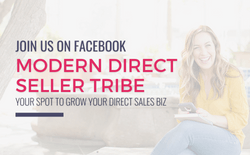

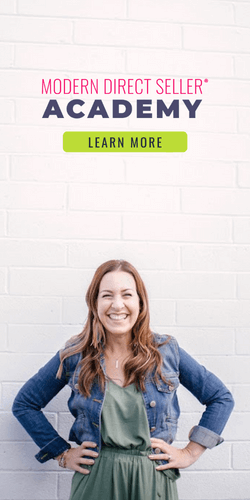

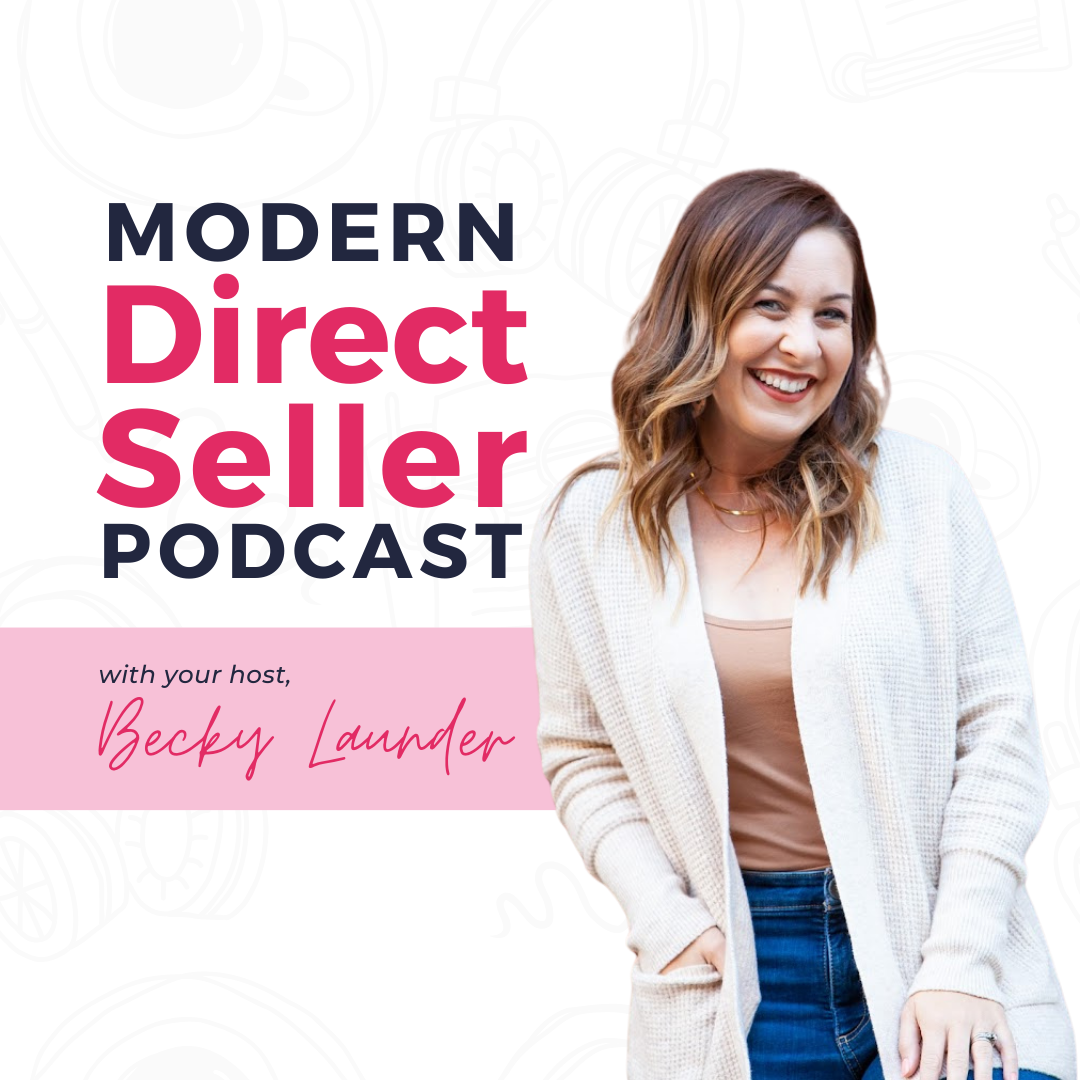
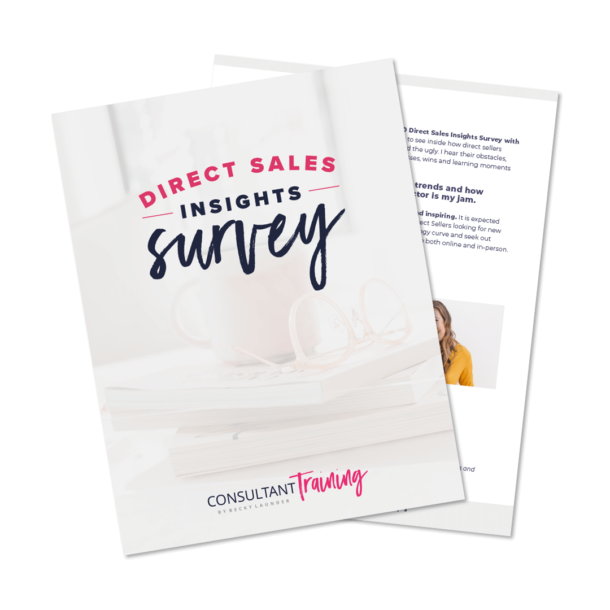
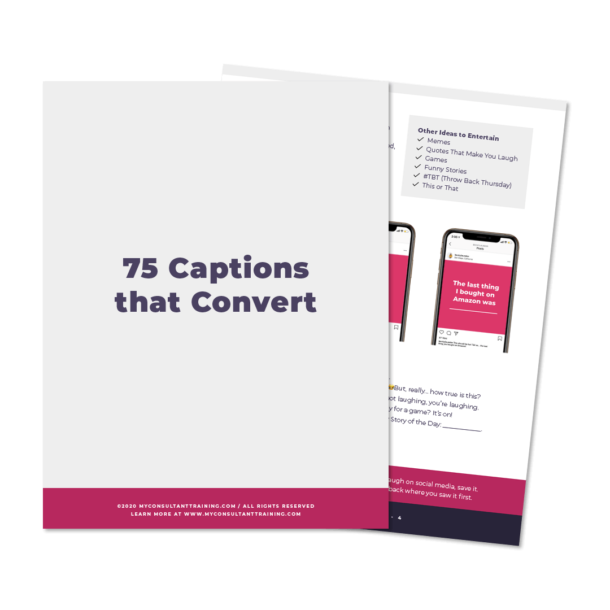
0 Comments